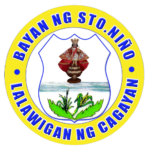Economy of Sto Niño Cagayan Overview
The primary source of income in Santo Nino is under the Primary Sector – Agriculture, Forestry and Fishing which is 71.40% employment from 2017 to 2018. Tertiary Sector is found mostly in the Government (9.42%), Wholesale and Retail Trade (8.19%) and Transportation (3.68%). Government Employment are the work force from the municipal government, BFP, DEPED, and PNP. Those engaged in the Wholesale and Retail Trade are sari-sari store owners and vendors of groceries, agri-vet supplies, RTWs, plastic/glassware, foot wears, and other general merchandise.
Education sector composed those employed in elementary schools and day care centers. Transportation activities are those engaged in ferry boats, tricycles and jeepneys operations to/from the municipality. Most employment in the Secondary Sector are those self-employed or with business on rice milling, butchering and furniture. Among the primary economic activities of the municipality from 2017 to 2018, Agriculture, Forestry and Fishing engagement reached the highest increase of 94.74% on establishments, particularly in crop and vegetable farming and selling and livestock and poultry raising.
Food service activities also showed significant increase on establishments (43.38%) and employment generation (27.91%) which are mostly in pancitan/eatery businesses. Wholesale/retail trade also showed an increase of 23.42% and 29.42% on establishments and employment, respectively. On the hand, transportation services had decreased by 25% on establishments and 13% on employment. This may be contributed to the fact that most residents have their own mode of transportation such as motorcycles. The aggregate agricultural area is a major land use of about 15,661.66 hectares or 30.54% of the total area in the municipality. The majority (48%) of which is for crop production – 8,528.17 hectares (16.63%).
